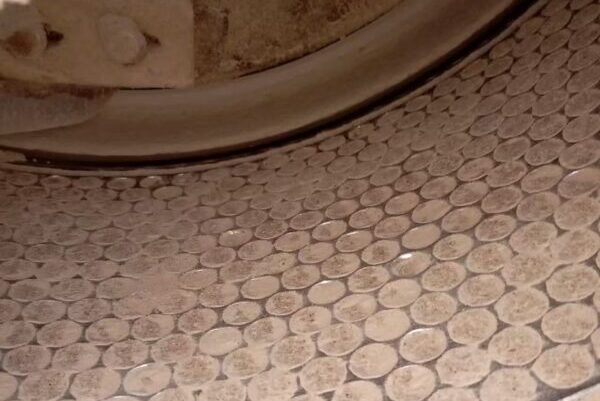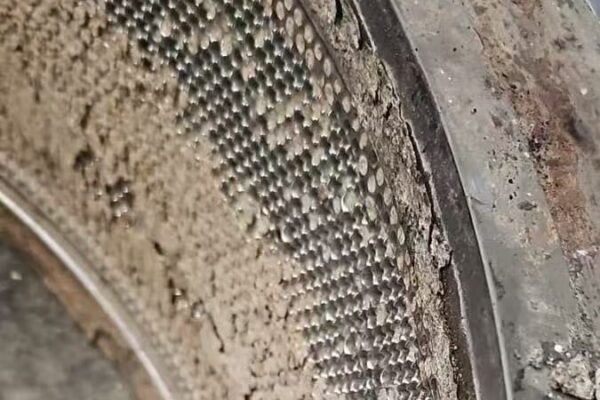Introduction – Why Ring Die Problems Matter in Pellet Mills
In my previous article, I discussed daily inspection and maintenance of pellet mill ring dies. Many customers then asked me to write about the most common pellet mill die failures.
Based on nearly 20 years of on-site customer experience and ring die manufacturing, I've summarized the 5 most frequent pellet mill ring die problems—including clogging, cracking, reduced output, poor pellet quality, and uneven wear.
More importantly, I’ll walk you through their causes, practical fixes, and proven prevention tips to help you reduce downtime and production loss.
1. Top 5 Pellet Mill Ring Die Problems in 2025
| Problem Type | What You'll Notice |
|---|---|
| Die Clogging | Poor discharge, high pressure, loose pellets |
| Die Cracking | Cracks, edge breakage, or total die failure |
| Reduced Output | Lower yield with same machine and formula |
| Poor Pellet Quality | Rough surface, short or inconsistent pellets, mixed sizes, black pellets |
| Uneven Wear | One side wears faster, machine starts shaking |
2. Die Clogging in Pellet Mill Ring Dies – Causes and Fixes
Causes
- Poor hole finish or incorrect hole diameter design
- Wrong hole diameter selection for material
- Moisture too low/high (ideal: 13–16%)
- Raw materials not screened or containing impurities
Fixes
| Side | What to Do |
|---|---|
| Manufacturer | Use high-speed gundrill; increase surface smoothness; polish dies for smooth holes (run-in before full load) |
| Operator | Control moisture, avoid overfeeding (check deflector), clean raw material (e.g., permanent magnet drum processing) |

Clogged die holes before cleaning – high pressure and overfeeding at the beginning.
3. Die Cracking in Pellet Mill Ring Dies – Why It Happens and How to Avoid It
Causes
- Material defects, overly dense hole layout, or excessive hardness from heat treatment
- Poor roller gap adjustment, foreign objects, or worn clamping rings/flanges
Fixes
| Step | Recommendation |
|---|---|
| Before machining | Use metal detectors to inspect raw steel |
| During design | Optimize hole spacing and hardness – Avoid blindly increasing hardness or open area, balance is key |
| During operation | Keep roller gap at 0.1–0.3 mm; check clamps and flanges regularly; replace worn parts promptly |

Crack on the inner ring due to excessive stress and poor roller gap control.
4. Reduced Output or Short Die Lifespan – Common Reasons and Solutions
Causes
- Poor steel quality or inconsistent heat treatment
- Inappropriate compression ratio, counterbore depth, or hole pitch
Fixes
| Tip | Action |
|---|---|
| Work with good supplier | Custom die design for your material; ensure stable manufacturing capability; proven service experience |
| Maintenance | Clean and flip dies regularly; adjust moisture and temperature based on raw materials |

Excessive wear on the working track reduces output and pellet quality.
5. Poor Pellet Quality – How Ring Die Design and Setup Affect Results
Causes
- Rough hole surfaces or excessive compression ratio causing overheating
- Outdated design not suited to current raw material
- Wrong roller type
Fixes
| Tip | Action |
|---|---|
| Die conditioning | For new dies, run-in with oily material or abrasive mix before full production |
| Roller inspection | Match suitable roller type according to materials |
| Communicate with professional supplier | Update hole design such as counterbore and countersinking |

Smooth, uniform pellets achieved through correct roller gap and die maintenance.
6. Uneven Wear on Ring Die Working Track – Causes, Prevention, and Maintenance Tips
Causes
- Roller gap not consistent across die width
- Uneven feed distribution from feeder or conditioner
- Pellet mill misalignment or worn bearings
- Uneven clamp torque on die flange
- Foreign objects causing localized damage
Fixes
| Tip | Action |
|---|---|
| Inspect rollers each shift | Replace if wear is uneven or surface is deformed – remember "NEW DIE MATCH NEW ROLLER" |
| Feed distribution | Ensure even material flow into die working track |
| Machine alignment | Check die-to-roller parallelism; replace worn bearings |
| Flip die every 500 tons or regularly | Use both sides evenly of bolt type die |

Uneven wear caused by inconsistent roller gap and feed distribution.
7. How to Prevent Pellet Mill Ring Die Failures During Daily Operation
1. Choose the Right Die for the Job
- Match compression ratio to material
- Select correct hole design (counterbore, relief holes, inlet chamfers)
- Ensure surface hardness (HRC 52–55) with a tough core
2. Maintain a Clean, Consistent Feed
- Avoid foreign objects (metal, stones, bolts)
- Keep moisture at 13–16% for most animal feed
- Ensure uniform particle size
3. Correct Installation & Alignment
- Die should seat evenly without forcing
- Tighten bolts evenly
- Maintain roller gap at ~0.1–0.3 mm
4. Manage Start-up & Shutdown Properly
- Warm-up with soft material before full load
- Flush with oily material before shutdown
5. Control Operating Parameters
- Keep temperature at 80–90°C for most animal feed
- Avoid running motor load above 95% for long periods
- Maintain stable pellet mill speed
6. Monitor Wear and Act Early
- Check hole smoothness for burrs or scoring
- Measure working track thickness
- Repair countersinking holes when needed
7. Implement Lubrication & Cleaning Routine
- Lubricate rollers and die regularly
- Use abrasive cleaning mix to keep holes open
8. Daily Maintenance Checklist for Pellet Mill Ring Dies
Full daily maintenance guide →
| Task | Frequency |
|---|---|
| Preheat die | 5–10 min before running |
| Check roller gap | Weekly |
| Add high-temp grease | Daily |
| Clean with oil+meal | After shutdown |
| Replace worn rollers | Every 1000–1500 hr accordingly |
| Flip die orientation | Every 500 tons |
9. FAQ – Pellet Mill Ring Die Troubleshooting (2025 Update)
Q1: How long should a pellet mill ring die last?
A high-quality die with proper maintenance can last 1,000–3,000 hours, depending on feed type, moisture, and machine setup.
Q2: What is the ideal compression ratio for my formula?
For poultry feed, 1:11–1:16 is common; for aquafeed, higher ratios may be required. Always match CR to raw materials.
Q3: Can I repair a cracked ring die?
Not Easy. Small cracks near non-working areas can sometimes be repaired, but working track cracks usually require full replacement.
Q4: How to improve pellet quality if my die is new but output is low?
Check roller gap, feed moisture (13–16%), and run-in the die with oily material before full load.
Q5: Should I change rollers when I install a new ring die?
Yes—uneven or worn rollers can damage a new die. Best practice: “New die, new rollers.”
Final Takeaway – Keep Your Ring Dies Healthy, Keep Your Line Running
Over the years, I've seen the same pattern: 80% of costly ring die failures could have been avoided with the right design, proper installation, and consistent preventive maintenance.
If you remember only three things, make them these:
- Choose the right supplier and the right die for your material and formula
- Keep your feed clean, consistent, and within the right moisture range
- Check, clean, and lubricate regularly—before problems appear
A ring die is not just a spare part; it's the heart of your pellet mill.
📩 Contact me for a free one-on-one die health check – Based on your raw materials, formula, and machine type, we'll help you get the maximum life and output from your ring dies.

